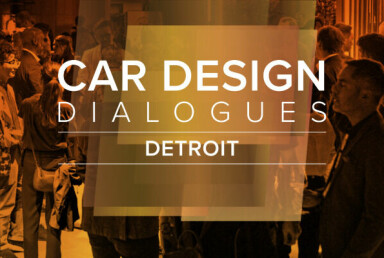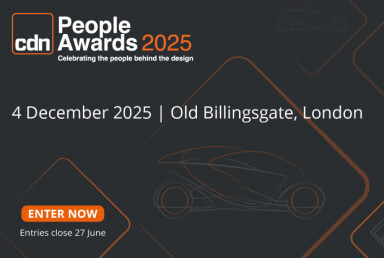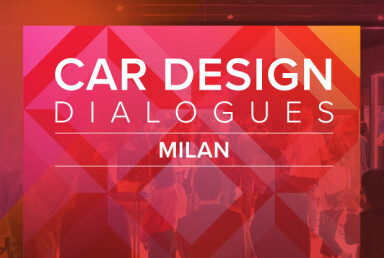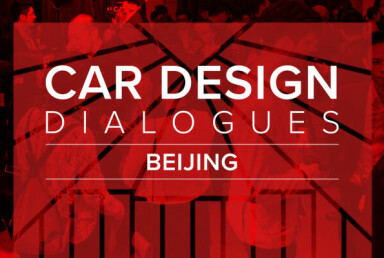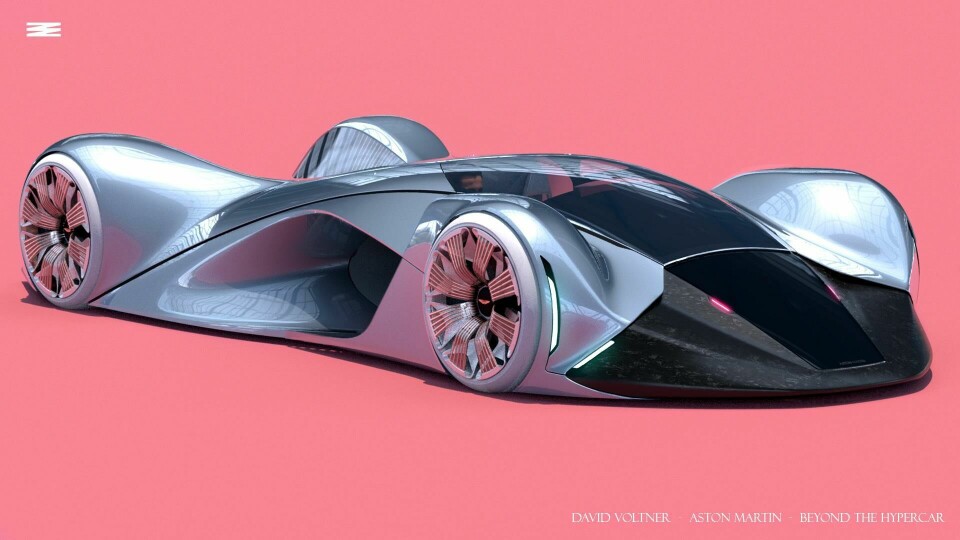
Pforzheim Summer Show 2019
A look at the Masters projects from the 2019 exhibition
Pforzheim’s latest summer show didn’t get treated to summer weather until the morning of the Classics Reunion, when lecturers and graduates alike turn up in their oldtimer machines. Nevertheless, we were treated to some very bright ideas indoors from one of the foremost transport design courses. Scroll down for everything ranging from an AV that makes you omnipresent, to a VW that’s part Microbus, part Thunderbirds and even a Lagonda with a retractable spiral staircase…
MA Thesis
Marc Faulhaber
With autonomous concept vehicles often taking on a monovolume, ‘box-on-wheels’ shape, the similarly formed VW Typ.2 microbus and its Transporter descendents are an ideal set of candidates for reimagining to suit this new formula. Faulhaber has taken their spirit and created a modular Transporter vehicle system, wherein an autonomous electric “platform” chassis carries different bodies for different tasks, Thunderbird 2-style. These include a large cargo pallette, a passenger pod with two-part horizontally-split doors for use in VW’s MOIA ride-sharing enterprise, and a delivery capsule.
The pods are also added or discarded autonomously, thanks to a powered conveyor system. When removing a top pod, the platform slides the upper unit backwards, at which point the upper part sprouts legs at just the right time to become freestanding at the end of the process. The platform carries a hydrogen fuel cell system for charging on the go, but the top pods also carry energy, and can ‘share’ power to and fro to keep things moving.
Gloria Yin
Polestar S
So far, Polestar’s cars have predominantly inherited their exterior designs from Volvo concept cars – namely the Concept Coupe and Concept 40.2 – which makes it somewhat more challenging to establish the language for a unique, standalone Polestar design. Yin argues, however, that the Polestar 1 and 2 have a harder, more extreme feel to them than the calm and sensible Volvo range could really get away with. To combine this with a feeling of safety and security, she also looked at Oriental warrior armour. The Polestar S’s B-pillar fin resembles the armour’s metal collar, while the narrow, full-width headlight unit took inspiration from the visor of a warrior’s helmet.
Lukas Rossnagel
Honda shooting brake
Rossnagel was inspired by two of Honda’s famous old advertising slogans – ‘Keep It Simple’, and ‘Home Sweet Home’ – when aiming to create an electric vehicle with the character and feel of a true Honda. The resulting D-segment shooting brake has a short hatchback tail reminscent of the ’80s Accord Aerodeck, as well as wing-like rear-view cameras at the trialing edge of the bonnet. Wires in the front spoiler and side skirts add a slightly more architectural feel, and a sense of attention to detail.
Linus Combüchen
Audi H-tron
Combüchen’s Audi has been conceived for a future in the year 2060 wherein equatorial cities have become uninhabitable due to global warming. The H-Tron is an all-terrain fuel call car meant to ferry people to and from the green energy production stations that exist in these areas instead. Instead of the currently popular method for storing hydrogen, the H-Tron would store its energy by way of ‘liquid organic hydrogen carriers’, which can be exchanged for fresh ones in a similar manner to bottle recycling centres.
Muhammad Abed
Multipresent
Abed’s autonomous coupé aims to give its user ‘digital ubiquity’ by using sci-fi style holographic projections to let them communicate face-to-face with people in other locations, letting them make more efficient use of their time. Taking the idea further, the large rods extending from the would-be windscreen and the tail can move fore and aft in the style of pin art, which is used inside to create or accentuate the ‘face’ of person being contacted by the user.
The DLO consists only of a narrow strip along the centreline, which is meant to create a ‘tunnel vision’ effect to keep the occupant focused on their own time.
Jeffrey Jiang
Seat Pavilion
Jiang’s 2+2 crossover takes its form from the mathematical (and subsequently architectural) phenomenon of the Parabola Arc. On the outisde, a ‘positive arc’ defines the bodyside – in particular the full-length curve that runs into the front and rear wheel. Jiang admitted that originally, the wheels were partially faired by a static cover to solidify this line, but because it added too much visual weight, they were changed into the elaborate rotating assembly you see.
The interior inverts the theme with a ‘negative arc’, which is then spun into a ‘hammock’ theme. This theme extends as far as two hook-like extensions from the bases of the A-pillars which reach through the dashboard to make it appear as though it’s suspended from above. The string-like pattern in the exterior side skirts, bonnet vents and wheel details extend the hammock aesthetic to the exterior to bring it all together.
MATD
Maximilian Thomas
“For me it was important to create an experience that fits the Lagonda brand: an experience which is the peak of exclusivity, progressive and a little unusual. In this context, I created a scenario and vehicle for the next Bond movie villain. The vehicle is a personal submarine designed with all this in mind.
The interior has large glass surfaces in the floor as well as in the ceiling of the vehicle, to offer an immersive underwater experience. The exterior is very simple and iconic with unusual surfaces treatments like negative surfaces and geometrical cuts.”
Xu Xuanming
Lagonda LaScala
”The goal of LaScala Concept is a bold yet simple one – to redefine luxury travel by challenging the status quo to create next-generation, hand-built, automotive luxury for the future exclusive segment.
Luxurious experiences in the autonomous era will not be limited to inside the vehicle. How passengers enter and exit the interior will also be a highlight. Beside today’s Oscars red carpet, the passengers usually struggle to push themselves through the small aperture of limousines, especially ladies with long dresses. However, the moment when passengers step out of the car is supposed to be one of the most elegant moments, which the luxury journey ends with. For such a special occasion, a bit more drama may also contribute.
This brings the idea of a ‘showcase’ system into LaScala concept. The ‘showcase’ transfers the passengers into/out of the vehicle during the most elegant movement. It was formed up with steps laid in different levels. All the steps integrated perfectly into the interior as part of the floor during the journey, and it can unfold like a paper fan after the vehicle arriving the red carpet. When the showcase hides itself up in the floor, the whole interior is a private space for the passenger – but when it is reaching the red carpet, the whole vehicle becomes part of the show.
The minimalist interior design is based on the form of the Möbius loop and the Penrose stairway. The unorientable surface language greatly inspired the design of the interior to reach a stage of simplicity and pure luxury.”
YeonJun Park
Aviator
“The future is the age of electric, autonomous cars. The performance of the car is no longer the strongest sales point of the car – even an electric family sedan can be as fast as the most powerful combustion-engine car. The car of future depends on the experience it gives to those inside the car, who could be uninterested in driving. My Aviator concept is answer of what is unique experience for passenger if car would be not following only driving experience anymore.
When moving from one point to another point, the most comfortable way to move is riding business class in an aircraft. I imagined the passenger could get that feeling: luxurious and comfortable, like floating in space, so they can relax. But, if the passenger wants to drive, for the thrill, the car switches to become drivable immediately. The asymmetric exterior’s top view sculpture is inspired by the Union Jack flag. The unique rear design is deeply inspired by ’70s and ’80s cars – especially Aston Martin’s one-off Bulldog. By combining those straight, edged structures and an ‘electronic devices’ character, I could make unique design point for the exterior.
In the single-seat interior, a thick white line is covering edge of surface with seat, to give a sense that it’s floating. In autonomous mode, to free-up more space, the IP is set back almost to the windshield, far away from the seat. When passenger wants to drive, the whole IP structure moves towards the driver, with the steering wheel coming out to meet their hands. Its design is closer to product and architectural design than traditional automotive interiors. I try to give the experience of playing an analog instrument or Bang & Olufsen audio device, not like driving other ordinary cars.”
Oscar Johansson
Lagonda August
“The ultimate luxury vehicle needs to provide unique selling points to its owner, to provide features and a sense of occasion that no other manufacturer can match.
This autonomous concept draws inspiration from stairs – its stripped back, yacht-inspired exterior can dramatically transform into a staircase where the passengers walk out through the front of the vehicle. This ensures that its owner will make the most spectacular entrance to any gala or event.
Adding to this feeling of exclusivity is the interior layout, which puts the main passenger in a comfortable, laid back position in the middle of the interior, with other passengers being seated in sofas along both sides of the interior space.
The vehicle features thin wooden inlays into its roof panels and interior flooring. Not only does this give atmosphere to the interior as light is scattered through, but it also provides the passengers with grip as they walk on the panels in the vehicle’s opened state – similar to a wooden deck on a yacht.”
Deng Jian
“The famous Japanese designer Toyo Ito’s work, the Museum of Architecture, was the original source of inspiration. The shape was created by the splicing of triangles and other similar geometric shapes. The subtle surface treatments made the final appearance different. Also, visual perceptions match two distinct themes, which is also a perfect interpretation of the relationship between the two brands.”
Aston Martin DB-Trinity
“In the future world, the pursuit of Aston Martin’s hypercar is definitely not just about performance, but more about the relationship and feelings between users and cars. Therefore, the Aston Martin DB-Trinity takes triangle as the core to fold and transform with the other parts and finally, the whole car is integrated into one, which forms a stable and hard, clean and pure visual experience. The use of the triangle element not only breaks the traditional Aston Martin visual image, but also makes the DB-Trinity have a maverick, unique, ethereal and mysterious feeling, which attracts people to enter this mysterious and elegant mobile space.”
Lagonda-Gaga
“This project is a single-seat compact electric SUV designed for the red carpet moment of Lady Gaga. It also uses the geometrical sculpture profile logic but the turning process is more euphemistic. The whole body is wrapped with screen skin, which can actively choose transparency. headlights and other details are as simple as possible to fit into the body, thus emphasising the sculptural feel of the car body. The unique vertical opening method also makes Lady Gaga more elegant and easy to get out of the car when it arrives at the red carpet.”
Min-Joo Kim
”What is Luxury? Time. We can feel intuitive relaxation in luxury design. I was inspired by ‘Cappuccino waves’, the most elegant, rare and unique moment in nature and expressed the ‘elegance of relaxation’, as a future design language of Lagonda.
In terms of heritage, I have reinterpreted Aston Martin’s 1976 Lagonda’s wedge-style body and ‘folded paper’ detailing more elegantly.
Lagonda Protagonist gives a new experience for both the driver and the audience (pedestrians). In Lagonda Protagonist, the driver (VIP) can show her/himself in a more elegant and mysterious way – even before the driver reaches the red carpet.
When the driver wants to show off her/himself, the driver can move to the core of the car. The Core Interaction Display changes transparently and the driver can show off the fashion style of the day. It can be a part of the exterior design of this car. At the same time, the audience cannot see the driver’s face (in the package drawing). They can only see the luxury outfit of the driver and Protagonist, and it amplifies the curiosity of who the protagonist of that car is.
I thought this mysterious luxury mood is the key of the future Lagonda’s design language.”
Yuting Liu
“Poise, the Aston Martin ‘beyond the hypercar’ project, shows that elegance can be the most important quality for future hypercar. As we all know, the hyper car nowadays is focused more on high performance and strong driving skills, but at the time that high-end brands already use their design language on X-game, the hypercar should try to become the top class of luxury sports instead.
In the Poise concept, I combine soft surfaces and brutal edges to explain the strong conflict between extreme sport and elegance, but also keep the Aston Martin luxury feeling inside. The side view is the most attractive sculpture. All the details – door line, air diffusers, small decoration – are removed or hidden in order to keep the most simple and strong surface language. Front and rear, there remains enough potential for high performance, e.g.: rear wings, air vents etc.”
David Voltner
Voltner’s Aston Martin hypercar, despite being extremely low-slung and sinuous, aims to move beyond being a mere performance machine, with as much focus on collecting medals at Pebble Beach as trophies at Spa. While the overall, multilayered form is inspired by a breaking wave, the spectacular array between the rear wheels was styled after the wings of the Aston Martin badge.
More intriguing, however, is that the bodysides are left completely open – in a way that won’t let in too much weather or nature, of course, thanks to the shapes around the opening – to give Caterham levels of sensory overload on the move.
Pedro Arturo Ruiz Garcia
Aston Martin DB-Myth
“Starting from visualising the future brand’s attitude to influence both its perception and products, the initial/abstract shape exploration aimed to find a simple yet sharp form and surface language to express the boldness and elegance the brand is renowned for. This expressive approach finds itself mixed with a clearly lightweight set of components shaped out of deconstruction and referencing Aston Martin motorsport heritage.
It’s this mix of both a purely artistic and a reimagined technical approach that allowed the designer to bring the brand’s Design DNA to new interpretations from gestures instead of graphics to be found intricate in the form (front face and side silhouette), a somewhat subliminal way to find out this is an Aston Martin.
Besides the use of both woven and forged carbon fiber with exposed colours in the technical part of the vehicle, the main body is built out of a memory alloy that would allow us to have a chrome or highly reflective finish with colour shade changing without any finish but from the material itself, helping reduce weight and add value or even personalisation.
The name DB-Myth comes out of following the current Aston Martin tradition of naming its products after mythological creatures or characters, representing the highest hierarchy in this realm. A vehicle you can only drive and witness outside the autonomous cities in which driving will be a risk to society, a vehicle you will only see in the middle of nowhere, it’s a myth.”
Jichen Fang
”The assignment for this project was to design an interior for the red-carpet events. The user we design for is Lady Gaga. As well as her musical success, Lady Gaga is also known for her various fashion styles, especially her apparels on the red carpet. She sometimes dresses very passionately, sometimes sexy or weird. The most impressive feeling I get from Lady Gaga is her asymmetrical dressing, which has a unique and high-level aesthetic. I want to bring this feeling as a concept to define my interior project to emphasise the VIP experience for Lady Gaga and to approach the aesthetics of and asymmetrical structure.
The colour, trim and materials are very important for this design. The dominant material is blackwood not only because of its natural dark colour and matte surface finish and wood texture, but also the fragrant smell created by the wood itself, which will relax customers’ bodies and create a relaxed environment. I would use rose gold material combined with blackwood to create a new feeling of future luxury.”



























































































































